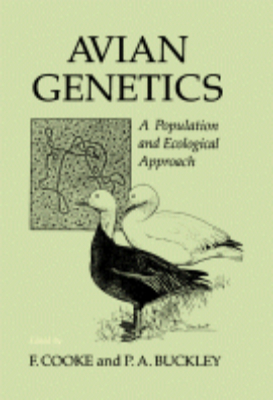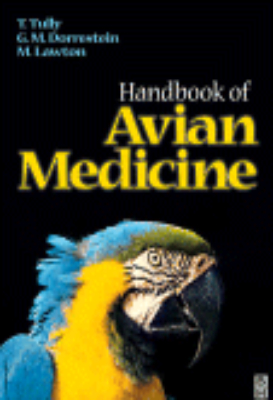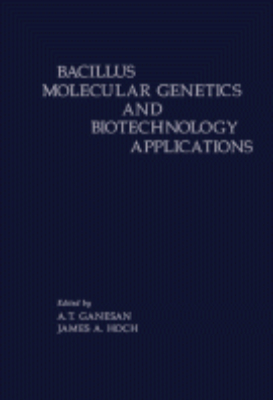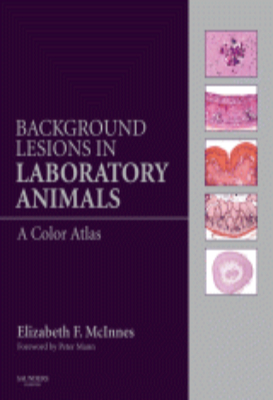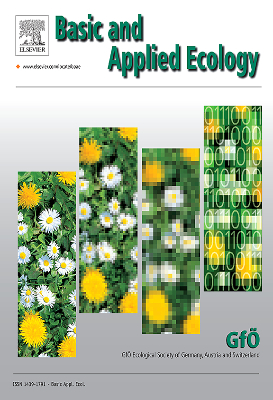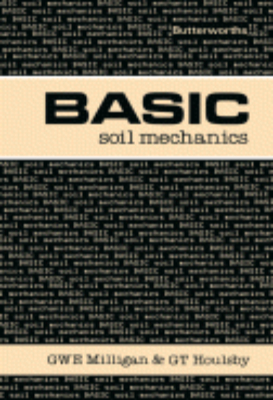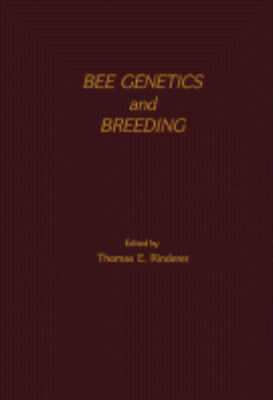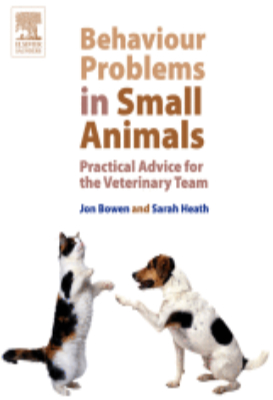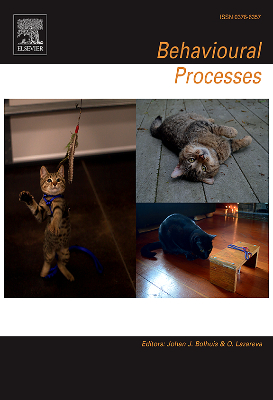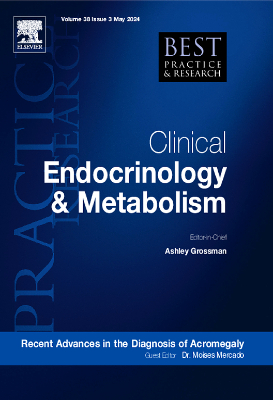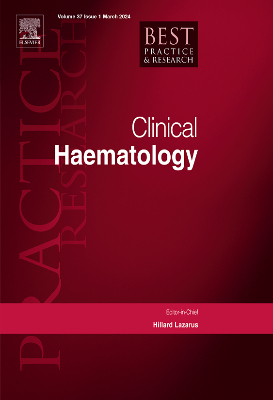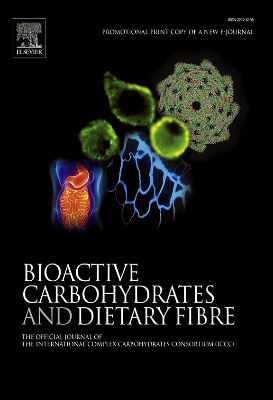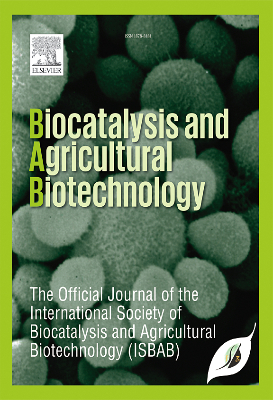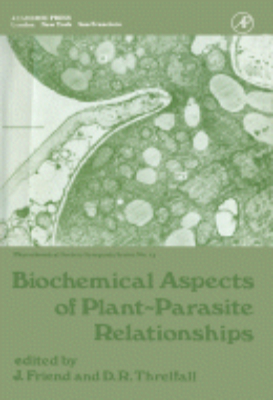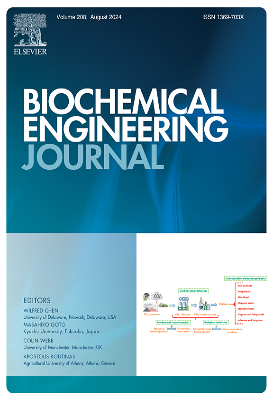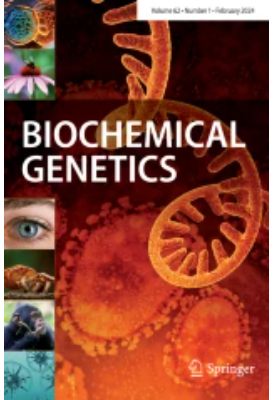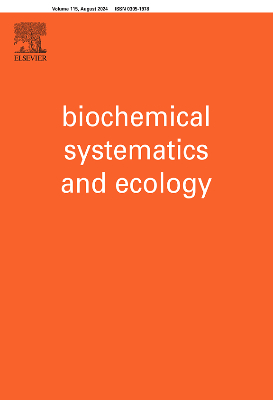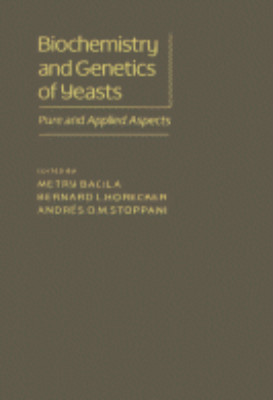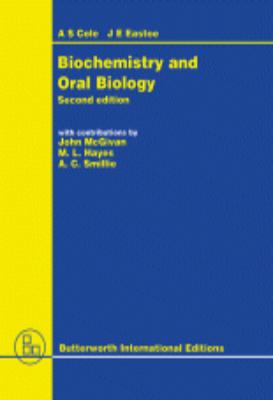E-Resources
Atlas of Veterinary Hematology
This colour atlas is designed as a reference for the morphologic aspects of veterinary hematology of common domestic animals. It covers a variety of species, including dogs, cats, horses, cattle, sheep, goats, pigs and llamas. The atlas is divided into two sections: the first covers blood, while the second discusses bone marrow. Techniques for the collection and preparation of blood and bone marrow spears and bone marrow core biopsies are covered, in addition to the morphology of the tissues collected. Often, multiple examples of a cell type or abnormal condition are shown to illustrate the variance in morphology.
Atlas of Zebrafish Development
"Zebrafish are widely considered an excellent model system for vertebrate development. The embryo is transparent, thereby enabling visualization and use of labelling and transgenic approaches. Moreover, because of the ease of inducing new mutations in zebrafish and similarity with the human genome, this organism may be used effectively for disease studies. For example, mutant zebrafish are being utilized for testing drugs that will combat a range of human diseases, from Alzheimer's and cancer to kidney failure and congenital heart disease. For the first time, this atlas provides the research community with a complete reference for zebrafish anatomy spanning the early embryo all the way to adulthood. The authors employ the technique of optical projection tomography (OPT), and offer a series of sections in multiple planes from each sample. The contents are organized by developmental stages, with over 200 images that contain annotations describing anatomical structures relevant to development. In addition, chapters feature explanatory text that highlights major developments in the zebrafish during each stage. Key Features. Provides the first comprehensive anatomical resource that covers all regions of zebrafish anatomy from the larval period to adulthood. The over 200 images include explanatory notes. Each chapter contains a concise description of key anatomical features that factor in zebrafish development. Despite many years of use as a model system, until now there has never been a guide to zebrafish at the larval stage. The book's website contains a database of over 10k sections from different regions as well as 3D images that are interactive"
August’s Consultations in Feline Internal Medicine Volume 7
Stay current with cutting-edge information from the leading feline experts! Augusts Consultations in Feline Internal Medicine, Volume 7 takes the popular Current Therapy approach to the latest issues, advances, and therapies in feline care. The 103 new chapters are organized by body systems, making information easy to access, and include more than 800 new detailed photographs, diagrams, and MRI and ultrasound images. Discussions of scientific findings always emphasize clinical relevance and practical application. This edition addresses new topics ranging from feline obesity and food allergies to respiratory mycoplasmal infections. From feline expert Susan Little, with chapters written by more than 130 international specialists, this practical resource will be an invaluable addition to every small animal clinician's library.
Avian Genetics
Avian Genetics: A Population and Ecological Approach is a collection of papers that deals with the study of birds in relation to the synthetic theory of evolution. This book studies the ecology, demography, behavior, and geographical distribution of birds; the text also discusses quantitative, chromosomal, biochemical, and population genetics. Part I reviews the various genetic interactions, including an analysis of DNA sequence variation. The different and newer techniques are compared such as the works of Sibley, Quinn, and White. Part II describes the molding genetic variation and covers topics such as inbreeding; gene flow and the genetic structure of populations; non-random mating; and the process of selection in natural populations of birds. Part III covers actual genetic case histories, including quantitative ecological genetics of great tits; genetic evolution of house sparrows; and presentation of evidence for sexual selection by female choice in the Arctic Skua. This book also presents future research in subjects such as the neutrality-selection controversy or genetics and conservation. This text can be beneficial for ecologists, ornithologists, animal conservationists, and population biologists studying birds.
Avian Medicine: 2000
The first five chapters cover the basic medical information needed to run a primary care avian practice. Again, the focus of the text is on introductory level material and avian practice within the average companion animal practice. If you see between one and five birds a week, this section is for you.The later chapters are species-specific. If a practice sees avian patients, it is not unusual to treat any one of these species and the information in these chapters will support the veterinarian in evaluating, treating and/or referring the patient. Written by international experts, these chapters will also be of interest to avian specialists, bringing them up-to-date on current thinking in areas such as seabird rescue and the management of zoo collections.Avian Medicine is an outstanding book that draws together all the essential information on the care of birds - providing an indispensable reference for veterinary practitioners, veterinary students and veterinary technicians.
Avian Medicine: 2016
Combining the in-depth coverage of a text with the practicality of a clinical manual and the visual detail of an atlas, Avian Medicine, 3rd Edition is the complete, all-in-one guide to every aspect of avian care. Written by some of the world's leading authorities in avian medicine, this highly illustrated reference covers a wide variety of avian species including psittacines, raptors, bustards, parrots, finches, and more. Comprehensive coverage includes issues ranging from the basic aspects of patient management to the most sophisticated diagnostic techniques. Plus, with more illustrations, a wealth of practical advice, and the latest information on cutting-edge treatments and procedures incorporated into this new edition, todays general clinician will be fully equipped to effectively and confidently care for all birds.
AZADI Ka Amrut Mahotsav Commemoration of 75th year of India?s Independence Programmes & Activities
The post-Independence journey of Indian Agriculture has been quite
impressive despite several limiting factors such as uncertainties of weather,
declining soil health, increasing atmospheric temperature and emergence
of more virulent pests and pathogens. The production of food grains, fruits,
vegetables, milk, meat, egg and fish has increased significantly. Systematic
and strategic research has led to development of new technologies to address
specific needs of the farmers. These are being disseminated through the
network institutions in the National Agricultural Research Education and
Extension System (NAREES), regular interaction with state governments
and other stakeholders, and increased use of digital platforms for
communication. Still there exist gaps in transfer of technology/ information
from lab to land. There is a need to strengthen our communication amongst
all stakeholders. The 75th Year of Nation's independence is being celebrated
as Azadi Ka Amrut Mahotsav. The DARE/ICAR has planned various activities
to be undertaken for 75 weeks preceding 15th August 2022. These include
awareness campaigns and lectures by eminent persons on the thematic
areas for reaching out to maximum stakeholders particularly farmers on
various new developments in different sectors of agriculture. This journey
of 75 weeks shall culminate with congregation of farmers who have been
successful in doubling their income, students and academicians with
release of the compendium on farmer's success stories. It is also proposed
to bring out a book on "Indian Agriculture: A Saga of Success-Role of ICAR
through Different Revolutions" and get it released during the occasion.
The proposed activities and campaigns during the 75 weeks of "Azadi ka
Amrut Mahotsav" have been compiled to provide a glimpse of our efforts.
I hope it would be interesting and informative to all the stakeholders.
The feedbacks and suggestions to strengthen our activities in future are
welcome.
Bacillus Molecular Genetics and Biotechnology Applications
Bacillus Molecular Genetics and Biotechnology Applications contains the proceedings of the Third International Conference on the Genetics and Biotechnology of Bacilli, held at Stanford University in Stanford, California on July 15-17, 1985. Contributors discuss the progress that has been made concerning the molecular genetics and biotechnology of Bacillus and cover topics related to transposons and plasmids, secretion, gene cloning, and gene expression. This volume is organized into five sections encompassing 39 chapters and begins with an overview of the origin and the state of molecular genetics, along with some of the contributions microbiology has made to fundamental biology. It then emphasizes the importance of scientifically based regulatory decisions and responsible industry actions for effective biotechnology regulation. The chapters that follow focus on Bacillus subtilis, touching on topics such as DNA recombination in plasmids, genetic system for stabilizing cloned genes, regulation of sporulation, and non-complementing diploids. The reader is methodically introduced to the secretion and maturation of subtilisin, cloning in streptomycetes, and genetic exchange and prospects for cloning in Clostridia. The book concludes with a chapter that describes an integrative and amplifiable secretion vector using the inducible promoter and signal peptide from the B. subtilis levansucrase (LS) gene. This book will be of interest to geneticists, microbiologists, and biotechnologists, as well as students and researchers in the fields of molecular biology and biochemistry.
Background Lesions in Laboratory Animals
"Background Lesions in Laboratory Animals will be an invaluable aid to pathologists needing to recognize background and incidental lesions while examining slides taken from laboratory animals in acute and chronic toxicity studies, or while examining exotic species in a diagnostic laboratory. It gives clear descriptions and illustrations of the majority of background lesions likely to be encountered. Many of the lesions covered are unusual and can be mistaken for treatment-related findings in preclinical toxicity studies. The Atlas has been prepared with contributions from experienced toxicological pathologists who are specialists in each of the laboratory animal species covered and who have published extensively in these areas. Key Features. over 600 high-definition, top-quality color photographs of background lesions found in rats, mice, dogs, minipigs, non-human primates, hamsters, guinea pigs and rabbits. a separate chapter on lesions in the reproductive systems of all laboratory animals written by Dr Dianne Creasy, a world expert on testicular lesions in laboratory animals. a chapter on common artifacts that may be observed in histological glass slides. extensive references to each lesion described. aging lesions encountered in all laboratory animal species, particularly in rats in mice which are used for carcinogenicity studies"
Bee Genetics and Breeding
Bee Genetics and Breeding provides an overview of the state of knowledge in bee genetics and breeding. The book is organized into two parts. Part I deals with the scholarly issues of bee genetics. It is intended as a reference source for students of both bees and genetics. It could also serve as a text for university courses in bee genetics. Topics discussed include the evolution of eusocial insects; geographical variability and classification of honey bees; and behavioral and biochemical genetics of honey bees. Part II deals more specifically with the practical issues of bee breeding. The discussions include the quantitative genetics of honey bees; ways to define and measure honey-bee characteristics so that the "best" parents for honey-bee stock improvement programs can be selected; and mating designs. This section contains sufficient guidance for bee breeders to initiate or improve breeding programs. Apiculturalists generally will find this part especially interesting since the quality of their own bee stock depends on the skills and knowledge of the breeders who produce their queens.
Behavioral Ecology of Tropical Birds
This book examines behavioral adaptations of tropical birds in timing of breeding, life history traits, mating systems and parental care, territoriality, communication, and biotic interactions, and emphasizes the many gaps in our knowledge of tropical birds. We urge students and researchers in temperate and tropical regions alike to realize the potential they have for improving our knowledge of avian adaptations far beyond what is currently accepted as gospel. Time is running out. Key Features * Line drawings with graphs* Unpublished data and observations from decades of authors' research in tropics
Behaviour Problems in Small Animals
"An easy-to-use, quick-reference text full of practical advice on how to handle behavioral problems in the practice situation. You'll find helpful practice tips such as tips on running puppy classes, guidelines for breeders, and guidelines for new owners. Discussions of canine behavioral problems include: aggression; fears, phobias and anxieties; elimination problems; training issues; and geriatric behavior issues. Feline behavioral problems include: aggression; fears, phobias and anxieties; elimination problems; grooming problems; bonding problems; and geriatric behavior issues. There's also a helpful appendix on drug dosages for behavior-related medications. Key Features. Coverage offers immediate advice to the veterinary team who are often presented with behavioral problems in their practice.. Easy-to-read format includes introductions, medical differentials, underlying causes, diagnosis, action boxes, and summaries.. Content refers the reader to other chapters throughout the book, so that information can be found quickly and easily.. Helpful handouts, which can be photocopied, offer yet another way to further your learning experience."
Bioavailability of Nutrients for Animals
This practical book provides crucial information necessary to formulate diets with appropriate amounts of amino acids, minerals, and vitamins. The factors that influence how well animals obtain these critical nutrients and methods for determining bioavailability are reviewed in this comprehensive text. In addition, data from both ruminants and nonruminants are included as well as established estimates of bioavailability for particular feed stuffs and feed supplements.
Biochemical Aspects of Plant – Parasite Relationships
Biochemical Aspects of Plant-Parasite Relationships is a collection of papers from the Phytochemical Society Symposium of the same subject held at Hull in April 1975. This collection discusses biochemical research on the mechanisms involved in the invasion of plants by pathogens, the production of disease symptoms, and the mechanisms occurring in plant resistance against the invading microorganisms. Some papers discuss the genetics of fungal-plant interactions and the structural features of both infection and resistance processes, Such genetic interactions and structural features point to a biochemical reason for the plant-parasite interaction. Several attempts to correlate production of a cell wall degrading enzyme in vitro by a pathogen's virulence have shown great differences between in vitro and in vivo environments. One paper cites as an example the pathogens which produce both pectic hydrolases and lyases: the type of enzyme that is found to predominate often is actually associated with the pH of the environment. One paper also investigates nucleic acid transfer and the possible role of RNA in the host-parasite specificity. This collection can prove beneficial for microbiologists, biochemists, biotechnologists, plant biologists, and academicians connected with the biological sciences.
Biochemistry and Genetics of Yeast
Biochemistry and Genetics of Yeasts: Pure and Applied Aspects consists of papers presented at a symposium organized by the Academia Brasileira de Ciencias held at the Universidade de Sao Paulo, on December 4-10, 1977. Organized into seven parts, this book reveals relevant and exciting developments in the areas of yeast genetics, respiration and fermentation, metabolic regulation, cell wall structure, synthesis of macromolecules, and transport. It demonstrates the presence of great progress in the knowledge of structure and functions of the yeast mitochondrial DNA. This book will be useful to scientific institutes and university laboratories interested in the biochemistry, genetics, and technology of yeasts.
Biochemistry and Molecular Biology of Parasites
The study of parasitic organisms at the molecular level has yielded fascinating new insights of great medical, social, and economical importance, and has pointed the way for the treatment and prevention of the diseases they cause.Biochemistry and Molecular Biology of Parasitespresents an up-to-date account of this modern scientific discipline in a manner that allows and encourages the reader to place the biochemistry and molecular biology of these organisms in their biological context. The chapters are cross-referenced and grouped in an arrangement that provides a fully integrated whole, and permits the reader to create a composite of the biochemical function of these organisms.Individual chapter includes those devoted to metabolism, in both aerobic and anaerobic protozoa; antioxidant mechanisms; parasite surfaces; organelles; invasion mechanisms; and chemotherapy. The helminths are discussed not only from the point of view of their cellular biochemistry and metabolism, but also with respect to both their integrated functions such as neurochemistry, structure and functions of surfaces, and reproduction. Written by expert investigators, this book will be of interest to all experienced researchers, graduate students, and to the newcomer eager to become familiar with the biochemistry and molecular biology of parasites.
Biochemistry and Oral Biology
Biochemistry and Oral Biology presents a unique exposition of biochemistry suitable for dental students. It discusses the structural basis of metabolism and the general principles of nutrition. It addresses the soft tissues, hard tissues, and the biology of the mouth. Some of the topics covered in the book are the free radical production; scope of biochemistry; characteristics of atoms; structure and properties of water; molecular building materials; ionization of proteins; affinity chromatography of proteins; structural organization of globular proteins; classification of enzymes; and biochemically important sugar derivatives. The naturally occurring fatty acids are fully covered. The nucleic acid components are discussed in detail. The text describes in depth the energy equivalents of different nutrients. The physiological effects of dietary fiber vitamin D deficiency are completely presented. A chapter is devoted to the alternative methods of fluoride administration and description of vitamins. The book can provide useful information to dental students, and researchers.






